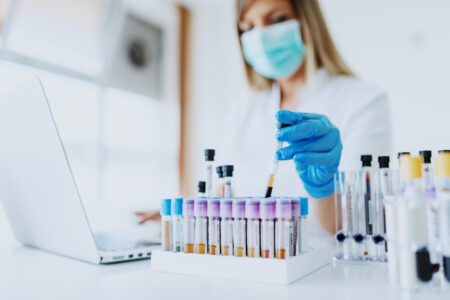
Share On Social!
Cancer is often associated with an aging population, but something is changing in the demographics of cancer survivors — they are younger.
There are projected to be 85,980 new cases of cancer in individuals between ages 15 and 39, according to the National Cancer Institute.
Decade trends show that this number has been rising an average of 0.3% each year.
Even though most young adults and teens with cancer are expected to survive for five years following their diagnosis, researchers are trying to understand why young survivors often face long-term health impacts, such as nerve pain and memory loss.
For example, a recent study – using All of Us Research Program data – found that four conditions that affect the brain or nerves were more common in young cancer survivors than their peers who have never had cancer.
Study Findings on Young Cancer Survivors
The study, funded by the National Institutes of Health and published in the journal Cancer Medicine, reached into the diverse pool of health data available through the National Institutes of Health’s All of Us Research Program to conduct its research.
Researchers compared the data of 800 All of Us participants diagnosed with cancer between ages 15 and 39 to the data of 3,150 participants within that age group who never had cancer.

Using the data from electronic health records and survey responses provided by participants, researchers found that survivors were more likely to experience memory loss, nerve problems (such as numbness and pain), chronic fatigue, and seizures, according to a news release.
Some of the survivors dealing with these ailments also reported that they were still being treated for them 10 years after their cancer diagnosis.
While survivors were found to be more burdened with cognitive and nerve conditions, they weren’t more likely to develop mood and behavioral programs such as anxiety or PTSD.
These results suggest that young cancer survivors may need more assistance to manage these conditions than other groups.
It also leaves more room for additional research that could explore the development of the condition and frequency, while looking into potential treatments for young cancer survivors dealing with them.
Significance of All of Us Data for Cancer Research
This study is more comprehensive than past studies of young cancer survivors given the fact researchers explored health conditions several years after their cancer diagnosis, according to a news release.
“Thanks to All of Us participants, we have a more complete picture of the health of people who had cancer as a teen or young adult,” the news release said.
The All of Us Research Program is a national effort to gather the health stories of over one million Americans.
The data provided by participants, which includes electronic health records (optional), DNA samples (optional), and survey responses are stored in a virtual hub for researchers to use.
Since the research program began, the data has been responsible for numerous historical discoveries, including the discovery of 275 million new genetic variants, that could hold the key to future treatments.
Many of these new discoveries are possible because of the diversity of the collected data.
For example, data collected from participants who didn’t have a cancer diagnosis acted as the base line for comparison for those who did have a cancer diagnosis.
When it comes to the All of Us Research Program, all data, however minimal, makes an impact in disease research.
Find out what power your health story can have on research by visiting the All of Us Research Program website.
Explore More:
CancerBy The Numbers
142
Percent
Expected rise in Latino cancer cases in coming years



